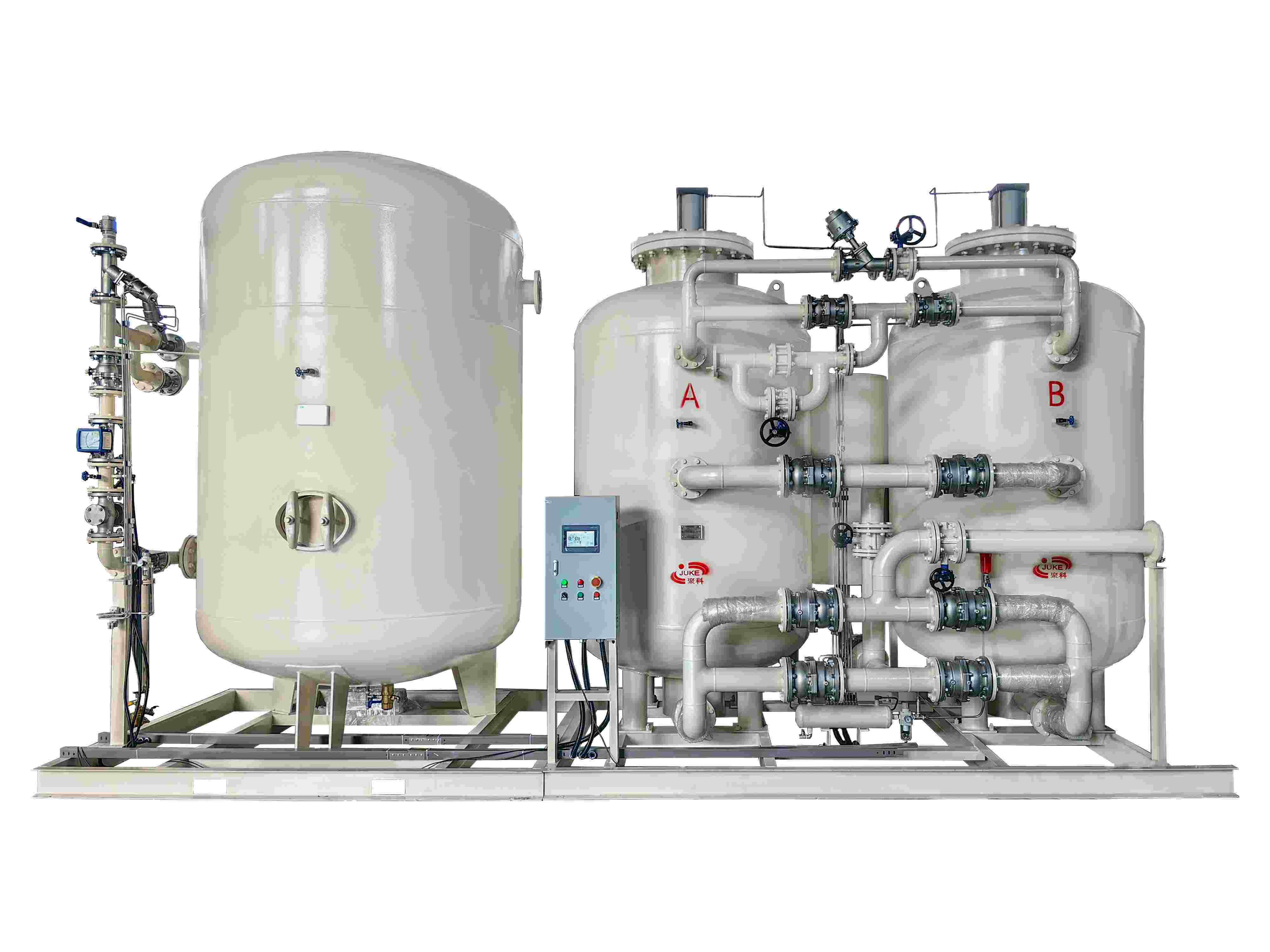Knowledge Sharing: Analysis of the Air-to-Nitrogen Ratio in a Nitrogen Generator
In the nitrogen generator industry, the air-to-nitrogen ratio refers to the ratio of compressed air consumed by the nitrogen generator to the nitrogen gas produced.

In the nitrogen generator industry, the air-to-nitrogen ratio is a crucial technical indicator that directly reflects the operating efficiency and energy consumption of the nitrogen generator. For users in related industries or with nitrogen generator usage needs, a thorough understanding of the meaning and influencing factors of the air-to-nitrogen ratio is of significant practical importance.
Definition of Air-to-Nitrogen Ratio
The air-to-nitrogen ratio typically refers to the ratio of the volume of compressed air consumed to the volume of nitrogen gas produced during the operation of a nitrogen generator. This ratio intuitively reflects the resource utilization efficiency in the process of converting air into nitrogen gas by the nitrogen generator.
Relationship between Air-to-Nitrogen Ratio, Nitrogen Production Efficiency, and Energy Consumption
Under the condition of the same nitrogen purity, the lower the air-to-nitrogen ratio of the nitrogen generator, the less compressed air is consumed to produce the same volume of nitrogen gas. This directly indicates that the nitrogen production efficiency of the nitrogen generator is higher because it can achieve the same output with less raw material input. At the same time, less compressed air consumption will also reduce energy consumption, thus achieving lower operating costs. Therefore, a low air-to-nitrogen ratio is one of the important indicators of superior nitrogen generator performance.
Differences in Air-to-Nitrogen Ratio at Different Purity Levels
Under the condition of the same nitrogen generator process level, the high or low nitrogen purity will affect the air-to-nitrogen ratio. Generally speaking, the air-to-nitrogen ratio of low-purity nitrogen generators is lower than that of high-purity nitrogen generators. This is because obtaining higher-purity nitrogen requires a more complex separation process, and the processing and screening of compressed air are more stringent, resulting in the need to consume more compressed air to produce a unit volume of nitrogen gas.
Key to Achieving High Purity and Low Air-to-Nitrogen Ratio
For nitrogen generators, achieving both high-purity nitrogen output and maintaining a low air-to-nitrogen ratio is undoubtedly a technological challenge. This requires nitrogen generator manufacturers to have strong R&D capabilities and continuously optimize separation technologies and processes; at the same time, it also requires advanced production capabilities to ensure that R&D results can be transformed into high-quality products, and stably achieve both high purity and low air-to-nitrogen ratio in actual operation.
If you want to learn more about the air-to-nitrogen ratio of nitrogen generators, or have any procurement or technical consultation needs, please feel free to contact us at Juke Consulting. We will provide you with professional and detailed answers and services.
Other areas
Oil storage and pressurized pipeline cleaning and purging of oil and gas wells, nitrogen sealing, nitrogen displacement, solvent recovery.
Used for food preservation and grain storage, pest control, food drying and sterilization, quick freezing of food, etc.
Provide the necessary gas raw materials for the preparation of new energy materials, battery production, and create an inert gas environment.
Ensure the manufacturing of electronic components and the stable operation of equipment, providing gas support for maintenance, combustion assistance, cooling, and other aspects related to thermal power generation equipment.
Nitrogen generator: Prevents oxidation, inhibits bacterial growth, and produces odors in biopharmaceuticals, providing protection throughout the process. Oxygen generator: Provides an oxygen-rich environment.
When signs of fire occur in the goaf or other locations, nitrogen injection is needed for fire prevention. The nitrogen device is lowered into the mine. It is used for annealing protective gas and sintering.
Used in the aerospace composite field, providing the necessary inert atmosphere for the molding and reinforcement processes of large carbon fiber composite wings.
Provide protection for the safety of oil and gas reserves, prevent oxidation, nitrogen sealing, and ensure dust suppression, fire prevention, and nitrogen sealing for coal reserves.

